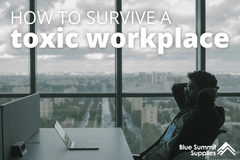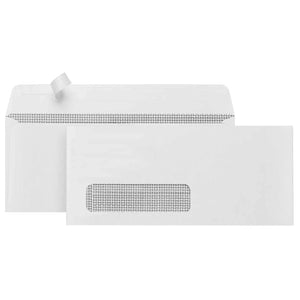Most people eat lunch every day, but not everyone actually takes a lunch break. Do you sit at your desk scrolling through emails or mindlessly browsing social media during your lunch break? Or do you intentionally take time away from your screen and practice healthy habits during your breaks?
So many of us get caught up in work and the grind of a busy day, sometimes to the point of neglecting our lunch break entirely. This bad habit is even easier to fall into when working from home. The lack of structure and not having others to gather with for lunch makes it easier than ever to eat lunch in front of the computer and power through the rest of the day.
On the surface, this may seem like a great way to accomplish more in your day, but taking breaks is vitally important to your productivity, energy, and stamina. Let’s discuss the importance of taking breaks, what bad habits to avoid during your lunch breaks, and what to do instead.
Why Lunch Breaks Are Important
Taking a break provides a much-needed opportunity to reset and refocus after spending several hours working. We can’t be “on” and at peak performance hour after hour, and if we try to do so, we’ll only lose focus, become less productive, and be more likely to make mistakes on the job.
Taking short breaks throughout the day is crucial for productivity, focus, and wellbeing, but the most important of these breaks is the lunch break. This 30-minute to 1-hour break gives employees a chance to refuel and refocus, so they can tackle the second half of the day with renewed energy. Workers who take lunch breaks experience numerous benefits that result in advantages for them as well as the business as a whole.
People who eat a healthy lunch, hydrate, go for a walk, stretch, etc., are able to reset before getting back to work, and they’re able to focus for longer periods after the break without feeling distracted. Breaks also alleviate stress, prevent burnout, and lead to a happier, healthier workforce.
Additionally, in a physical office environment, lunchtime provides opportunities to socialize and team build, which leads to stronger collaboration and increased trust. While lunch doesn’t always need to be a social endeavor, it can be an ideal opportunity for employees to get to know one another, including interacting with coworkers who may not be part of the same work team.

📚 Learn more about How to Build Trust in the Workplace.
Stop Doing This on Your Lunch Break
Using your lunch break to check work emails or troubleshoot problems won’t provide you with the same benefits as people who spend their time truly resetting and refocusing. So, what unhealthy lunch habits should you avoid?

1. Don’t Skip Your Breaks
Let’s dispel this lingering belief right here and now: skipping your breaks to work straight through the entire day does not mean you—or your employees—will get more done.
Human beings need to take breaks. We only have so much energy, and no matter the amount of caffeine we consume, we cannot maintain the same level of focus and enthusiasm all day. Our productivity will slow down, we’ll become distracted and more susceptible to the call of social media, and we’ll certainly become more irritable. Science tells us that getting “hangry” is a real thing—it’s not just a joke or clever marketing ploy. We need to eat, and if we don’t, not only will our productivity slow down, but we’ll also become grumpy (and less fun to work with!)
As an employer, ensure you are creating an environment where employees feel they can take breaks. Managers should also monitor workload to make sure no one feels like they are too behind or have too much work to afford to take a lunch break.

2. Don’t Multitask During Your Meal
When multitasking through your meal, whether by watching TV, scrolling on social media, or trying to get through just a little more work, a few things happen. First, you end up not enjoying your food as much because you’re not giving it your full attention. Even if it’s delicious, you won’t get the experience of enjoying your food if you’re not paying any attention to it.
Next, you’re more likely to feel hungry after the meal ends because you haven’t given your brain time to register what and how much you are eating. Ever made it to the end of a meal only to realize you were eating on autopilot? Does it ever make you feel like you should eat more because you were robbed of the experience the first time?
Malina Malkani, RDN and creator of Solve Picky Eating says, "Eating while doing something else—whether it’s working, watching television or using a smartphone—detracts from our ability to recognize internal cues for hunger and fullness, which can lead to overeating and less overall satisfaction from meals."
The act of multitasking while eating lowers enjoyment of the meal—which is no way to reset the rest of your workday.

3. Don’t Turn to Your Phone (It’s Just Another Screen)
You may not be invested in work during your lunch break, but turning to your phone screen can be just as harmful. Your phone is filled with distractions and negative influences.
Mindlessly scrolling through social media or news feeds does not give your brain the much-needed break it needs after half a day of work. Plus, there’s a very strong likelihood you will see something that makes you feel angry, sad, or annoyed. These negative influences can put you in a worse state mentally than if you skipped the break entirely.
The solution here isn’t to skip your break but to be mindful of how your actions and activities during your breaks affect your mood. If you are going to look at your phone, make sure it leads to positive, healthy results, such as completing a brain puzzle like Wordle or sending a positive message to a loved one.
As you get better at utilizing your breaks, continue to reduce the time you spend on your phone, filling this time with healthier habits instead.
What You Should Be Doing on Breaks
Breaks allow employees to reset both their minds and bodies, meaning they’ll come back to their desks refreshed and ready to work again, but only if they use their break time wisely. Here’s what to do during your lunch break and how employers can better facilitate this important part of the workday.
1. Be Present and Practice Mindfulness
Be present when eating your food. You’ll enjoy your meal more and feel more satisfied. This also means you will be much less likely to overeat or reach for unhealthy snacks after the meal concludes.
We’re used to hyperstimulation, so this won’t be easy at first. But eating a meal isn’t doing nothing, and we don’t need to be doing anything else when we’re eating. Be mindful of the act of eating and what you’re putting in your body. How does it taste? How will the meal’s nutrients benefit your day?
If you have time, incorporate other mindfulness activities, such as walking, stretching, meditating, focused breathing, coloring, or journaling. Allow your brain to free itself from work and anything else that may be weighing on you.

2. Check in With Yourself
If you want to return after your break refocused and ready to tackle the second half of your day, you need to check in with yourself. This process won’t take up much time during your break, but it will help you hit the ground running when you return to work.
How are you feeling physically, mentally, or emotionally? Is there any small thing within your control that could help you alleviate these feelings? For example, if you notice your back is hurting, take a few minutes to stretch. If you’re feeling a bit low, look at a photo of a loved one or take a few moments to replay a happy memory in your mind.
As you reach the end of your lunch break, begin thinking about how you want the rest of the day to go. Just because it got off to a bad start doesn’t mean it needs to continue down that path. This midday break is an opportunity to reset and return to work with a fresh mind.
💡 Having a Bad Day at Work? Use Our 8 Strategies to Turn Your Day Around.
What Employers and Managers Can Do
Don’t leave it all up to your employees. As a manager or business owner, it’s up to you to ensure each individual on your team maintains their work-life balance and is able to take necessary breaks while on the job.
- Ensure employees have enough break time during their lunch break to reflect and reset. Lunch shouldn’t be a race against the clock.
- Make taking breaks mandatory, and ensure employees are paid for this time.
- Teach and promote the importance and many benefits of taking breaks.
- Ensure employees have access to quiet places where they can practice mindfulness.
- Monitor workload to ensure employees feel like they have the ability to take breaks from work.
- Check in with team members to make sure employees are actually taking their lunch breaks.
- Gather feedback to find out if break times and the duration of lunch breaks are working for the team.

More From Blue Summit Supplies
💡 10 Pros and Cons of Unlimited PTO: Is It Really the Best Vacation Policy?
💡 Autonomy in the Workplace: Why It’s Important and How to Get More
The Blue Summit Supplies blog helps businesses manage efficiency, team dynamics, and wellness. Follow us for the latest trends, office strategies, product comparisons, and more.
If you have any questions or want to talk to someone about office supplies, leave a comment, send us an email, or connect with us on Twitter, Facebook, or Instagram.









